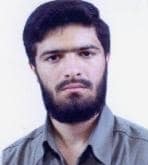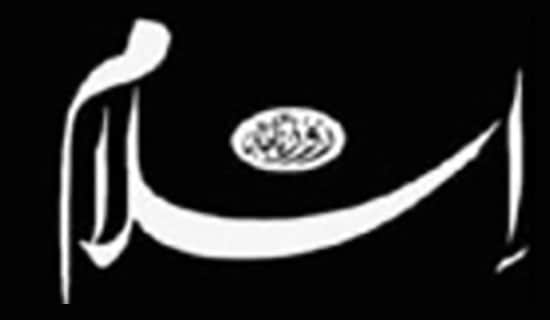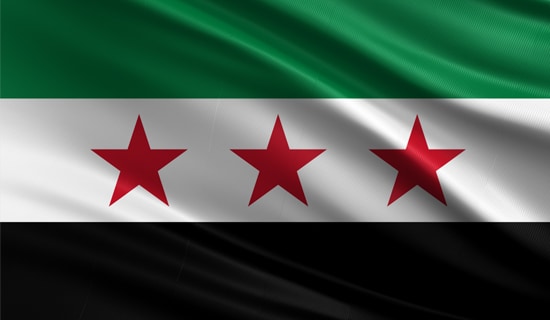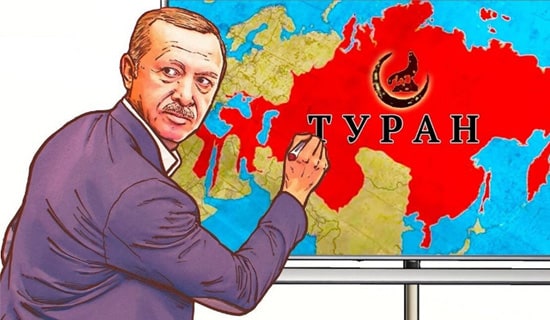Introduction
As the reciprocal war of words between the Western and Iranian media escalated, and in response to Israeli declarations regarding the necessity of stopping Iran's nuclear program with a military strike, Alireza Forghani, a staunch supporter of Iranian Supreme Leader Ali Khamenei[1] and, until recently, governor of Kish Province, called on the Iranian regime to attack and annihilate Israel. His article, titled "Iran Must Attack Israel by 2014" and published February 4, 2012 on numerous pro-regime websites,[2] follows an article he published a month ago praising jihad against the Americans and emphasizing the Iranians' hope for a war in which they would die as martyrs.[3]
Forghani's latest article contains two parts. The first expounds on the religious justifications, based on the Koran and the teachings of Ayatollah Ruhollah Khomeini, obligating all Muslims to attack Israel for stealing Palestinian lands and aspiring to take over the rest of the Islamic lands between the Nile and the Euphrates. According to the author, such an attack is obligatory, whether as defensive jihad (when Muslims are attacked by others) or as jihad in its basic sense (holy war against infidels).[4]

The second part of Forghani's article provides a detailed operative overview of how Iran will carry out the attack against Israel. He claims that Tehran is capable of annihilating Israel within less than nine minutes using its arsenal of missiles and by deploying operational combat units throughout the world. The article specifies targets to be hit inside Israel, including nuclear facilities, air force bases, and civilian infrastructure, as well as providing detailed profiles of the various missiles Iran will use, including Shahab 3, Sejjil, Ashura, and Ghadr missiles.
It would seem that the article, whose publication coincided with statements by Khamenei, in his Friday speech of February 3, about the need to wipe out the "cancerous growth" of Israel, is the regime's response to recent statements by Israeli leaders regarding the necessity of attacking Iran. While Forghani, who notes that his article expresses his own views and not necessarily those of the regime, states that Iran must take it upon itself to annihilate Israel, Khamenei has avoided pitting Iran as an active combatant against Israel, keeping his country in a supportive role of assisting other forces against Israel.
Forghani claims that Iran must take advantage of the Islamic awakening sweeping the region, which he says has paved the way for Israel's destruction; of the passivity he says characterizes the U.S. and the West; and of the presidency of Ahmadinejad in order "to destroy Israel," and therefore sets the deadline as 2014, which he says will be the end of Ahmadinejad's presidency. He says that Iran must launch a preemptive attack against Israel entailing heavy military strikes from start to finish. Israel's strategic points "must be totally annihilated," he says, advising the regime to use its long-range missiles to this end and noting that the distance from the easternmost point of Iran to the westernmost point of Israel is 2,600 km, a range covered by conventional Iranian missiles.
Following are excerpts from the article detailing an Iranian attack on Israel, in the original English translation, which has been lightly edited for clarity:

"Some Israeli critical points which should be attacked"
"[The] Israeli People Must Be Annihilated"
"Israel is the only country in the world with a Jewish majority. According to the last census of [the] 'Israel Central Bureau of Statistics,' this country has a population of 7.5 million, including 5.8 million Jews. The other ethnicities in [its] population structure are Muslims, Christians, Druzes [sic], and Samarians. The largest ethnic minorities are [the] so-called Israeli Arabs."
"Residents of Tel Aviv, Jerusalem, and H[a]ifa can be targeted even by Shah[a]b 3 [missiles]. Population density in these three adjacent areas composes about 60% of [the total] Israeli population. Sejjil missiles can target power plants, sewage treatment facilities, energy resources, [and] transportation and [communication] infrastructures; and in the second stage, Shahab 3, Ghadr, and Ashura missiles can target urban settlements until [the] final annihilation of Israel['s] people."

•" Northern District (Mehoz HaTzafon). Population: 1,231,900; District capital: Nazareth
• "Haifa District (Mehoz Heifa). Population: 880,700; District capital: Haifa
• "Central District (Mehoz HaMerkaz). Population: 1,770,000; District capital: Ramla
• "Tel Aviv District (Mehoz Tel Aviv). Population:1,227,900; District capital: Tel Aviv
• "Jerusalem District (Mehoz Yerushalayim). Population: 907,300 District capital: Jerusalem
• "Southern District (Mehoz HaDarom). Population: 1,201,200; District capital: Beersheba"
"Destruction of Israeli Infrastructure"
"Destruction of Israeli infrastructure, like railroad stations, airports, and nuclear facilities, by Sejjil missiles must be on the agenda. In the past 10 years, Iran could perform this operation in [the] depth of Israeli soil."

"Destruction of Israeli Nuclear Bases"
"[The] 'Rafael' nuclear plant is one of the oldest power plants in Israel. This power plant is the main nuclear engineering center of Israel. 'Eil[a]b[o]un' nuclear plant is the other Israeli reactor, located in the village 'Nebrin' [sic]. Residents of this village were forced to leave their homes in 1948. This plant is considered to [house] Israel's tactical nuclear weapons arsenal. 'Eriha' [sic, apparently Jericho] surface-to-surface mid- and long-range missile[s], capable of delivering nuclear warheads, [are] stored in this facility. The range of this missile is [from]500 up to 1,480 km.
"According to Yedioth Ahronoth, Ron Ben Yashal [sic, Ben Yishai], Israeli military affair analyst, said; 'There is not any place in Israel which is out of Iranian missile range.' He added: 'Although [the] Israeli missile arsenal is quantitatively and qualitatively much more advanced, its stock, which amount[s] to 100,000 missiles, [is] constantly within the range of Iranian missiles.'
Facilities like [the] Dimona reactor, in the nuclear research center in [the] Ne[g]eb, are one of the targets. Dimona is the most critical nuclear reactor in Israel and consists of 10 building[s] and 3,000 scientists and technicians. Israel's plutonium plant is located there. Dimona produces above 90% [of the] enriched fuel [used] for Israeli nuclear weapons and bombs.
"Besides, [a] U.S.-Israeli joint lab for testing cyber operations against Iranian nuclear facilities is based in this site. StuxNet was a computer w[o]rm that was tested in Dimona with the aim of disturbing and stopping activities in Iranian nuclear facilities. StuxNet was designed to penetrate in[to] control and managing computers based on Siemens technology. This w[o]rm was delivered [to the computer] systems by a Russian technician and through memory storage tools, and then spread rapidly in nuclear facilities, but was detected by Iranian cyber defense experts.
"According to the strategy announced by Obama two weeks ago, deploying ground forces like what happened in Iraq and Afghanistan is [being] substituted by other strategies like cyber war. Therefore, targeting Dimona should be of high priority in attacking Israel."

"Israel's air bases"
"Destruction of Israel's Air Bases"
"There are 12 airports in Israel, but just three of them are civil[ian] air ports, and the rest are under control of [the] IDF. Sedot Mikha Air Base [houses] Jericho ballistic missiles and is located in [the] southwest of [the country at] Tel Nof Air Base, where F-15 aircraft, equipped with nuclear weapons, are nested. F-16 jets are stationed in Roman Ari Base [sic, probably Ramon Air Base]."
"Destruction of Israel's [Marine] Surface Vessels"
"Destruction of Israeli [marine] surface vessels and submarines can be accomplished by:
"1. Missile attacks in waters which are under influence of [the] Islamic Republic [of Iran].
"2. Special operation forces [to be deployed] all over the world.
"3. [Planting a] variety of sea mines, including subsurface and remotely controlled variants. These weapons can be deployed by Iranian vessels and submarines in Israeli offshore [waters]."
"Missiles That Can Destroy Israel"
"After years of imposed war, considering regional conditions, results of missile attacks [against] Israel, and [the] available technology, Iranian defense officials decided to base [the] main part of defense and deterrence strategy on developing mid- and long-range missiles. In this process, significant efforts were concentrated on precision, efficiency, and [using a] variety of warheads. In this report, we will offer [a] concise description of mid- and long-range ballistic missiles that can target territories of this regional cancerous tumor, i.e. [the Al-]Quds occupying regime.
"After testing Shahab 3 missiles [in the] late 90's and announcing [their] specifications, especially the range of 1,300 km, [the] enemy's perception [of[ Iranian missile capability changed and gradually [raised] concerns among the military officials and then Zionist politicians, [that] introducing newer, longer ranges and more [precise] variants of [the] Shahab 3 was a sign of accomplishing higher levels of missile technology and more dreadful missiles in the future."
"Shahab 3 Missiles"
"[The] Shahab 3 was designed as a continuation to [the] Shahab 1 and 2 missiles, with some changes in designing different systems. There are many technical similarities between Shahab 2 and 3, but the latter is more sophisticated and enjoys new electronic technology and advanced computer guidance soft- and hardware. The range of this missile is said to be 1,300 km, which means that [if launched] from western parts of Iran, it can target Palestinian occupied territories."

"Different variants of Shahab 3 missiles were produced and introduced to military arsenals. Ranges and subsystems of new versions are promoted, but they all use single-stage liquid fuel engines and inertial guidance systems."
"Different types of warheads, especially cluster warheads, can be used in this missile. [The] length of this variant is about 16.5 meters up to 17 meters, and their range is up to 1,800 km.
"Considering that the [smallest] distance from western parts of Iran to [the] farthest point in [the] occupied territories is barely more than 1,200 km, [the] Shahab 3 family is a serious threat against every enemy and aggressor."
"Ashura"
"This missile has been developed based on [the] Shahab 3 and is a liquid propellant long-range missile. [The] shape of [the] warhead is similar to late versions of [the] Shahab 3, and has a reduced diameter in upper portions. The missile makes use of indigenous subsystems, and the capability of carrying various types of warheads is a characteristic of this missile. Domestic resources have announced a range of 2,500 km for this missile, though foreign experts' estimates of its range are 25% to 50% greater. Due to similarities in dimensions between [the] Ashura and Shahab 3, it is feasible to use previous launch systems for this missile. Its range allows it to hit targets in the westernmost points in occupied Palestine from eastern Iran."
"Ghadr"
"The Ghadr-1 missile, introduced in 2007, was produced as a sequel to development of Shahab liquid propellant long-range missiles and, indeed, is considered a member of [the] Shahab family. This single stage missile has been reported to have a range of about 2,000 km, and a shorter preparation time compared with previous versions is one of its characteristics. This gives the missile a greater response speed. Some variants of this missile equipped with cluster warhead have been introduced. The warheads are of [a] detachable type. The F variant of [the] Ghadr has a length of 15.86 m and a range of about 1,950 km, and enjoys an inertial guidance system."
"Sejjil"
"Like [the] Ghadr and Ashura missiles, the Sejjil was introduced in the second half of the 2000s, and some experts consider it Iran's most prominent ballistic missile, as enemy experts acknowledge that [the] Sejjil has [no] foreign equivalent. Sejjil is Iran's firs[t] solid propellant ballistic missile, and most probably Iranian missiles' pioneer on its way to wipe Israel off the map (in case of unavoidable military action). This is [due to] its mobile launcher system, with an ability to carry a ready-to-launch missile.
"Due to [the] use of solid fuel, the missile would be prepared to launch within a few minutes and the launcher could move quickly afterwards. This decreases the probability of the preemptive destruction of [the] missile before launching. Furthermore, due to [the] Sejjil's extremely high acceleration, the possibility of its detection in the early stages of launch would be very low, and the enemy would literally have no chance to intercept the missile."

"[The] Sejjil has been reported to have a range of 2,000 km and, so far, two variants of Sejjil 1 and Sejjil 2 have been developed, which is an indication of the related industries' efforts to improve it. The Sejjil missile is a two-stage vehicle [in] which, upon depletion of [its] firs[t] stage fuel, the motor detaches and the second stage motor ignites. The detachment of the first stage decreases the weight of [the] missile and help[s] increase the range."
"Iran Could Destroy Israel In Less Than Nine Minutes"
"[The] Sejjil belongs to the series of Iranian ballistic missiles which fly above [the] atmosphere and, after traveling [their] trajectory [at] such altitude, enter the atmosphere and head towards [their] target at a velocity of Mach 10-12 (around 3,400 to 4,080 m/s), which makes it impossible for air defense systems to [intercept]. This [demonstrates] the country's missile technology progress towards attaining such an important achievement. Moreover, the combined solid fuel technology used in this missile provides desired propulsive characteristics as well as storing lifetime.
"The 23,623 kg Sejjil has a 17.75 m length, 1.25 m diameter, and a 500 kg detachable warhead. The missile reaches its maximal range within 835 s (13 min, 55 s).
"The Sejjil's targeting, navigation, and guidance systems provide high accuracy and precision, which makes it operationally invaluable.
"Liquid propellant missiles take longer to be prepared due to the time needed for charging the fuel before launch. In this case, there is a possibility that [the] missile [may] be detected before launch. To tackle this problem, underground silos have been constructed in different sites in the country to contain charged and ready-to-fire missiles for month[s].
"Given the great number of these silos, once the [launch] time for each missile comes, there would still be a huge number of missiles in other silos which are ready to fire. Thus, the liquid propellant missiles could also be used in primary response to enemy action.
"All of the [previously] mentioned ballistic missiles have been improved in terms of guidance systems and reduction in radar reflection, and are ready to fire [at the] enemy. Regarding the number of missiles, foreign experts acknowledge that Iran could fire tens of missiles per day toward Israel and sustain the attack for several months.
"The above mentioned ballistic missile's guidance system is of [a] propulsion vector control [system], which, through blades at the rocket exhaust, changes the exhaust gases' direction and corrects the missile direction. This system does much better than flap-based control systems, and the optimization of this system is one of the factors contributing to Iranian missiles' precision."
Interview With Director Of Iranian Center For Strategic Defense
It should be noted that the English version of the article includes an interview with Ali Shamkhani, director of Iran's Center for Strategic Defense Research and former defense minister. In it, Shamkhani explains why a missile strike against Iran would be ineffective. He points to the development of the Sejjil 2 missiles, which superseded the Shahab 3 because of their use of solid fuel, and which are stored in underground silos out of reach of enemy air strikes, as one factor, and to Iran's strategic depth compared to that of Israel as another.
Appendix: Details On the Author From His Blog
Alireza Forghani provides the following details about himself on his blog:

"Married, a resident of Tehran, born August 31, 1983
"Telephone: 09124906386
"Favorite book: The Absolute Rule of the Jurisprudent
"Favorite sport: Jihad in fierce war"
* Y. Mansharof is a research fellow at MEMRI; A. Savyon is director of the Iranian Media Project.
[1] Forghani referred to Khamenei as "Imam" as early as September 2011. http://alireza-forghani.blogfa.com, September 3, 2011. He recently resigned his post as governor of southern Iran's Kish Province over tensions with pro-Ahmadinejad circles. Fars (Iran), December 24, 2011.
[2] The article, which originally appeared on Forghani's February 4 blog in both Persian and English, was published on websites aligned with Iran's moderate-conservative stream and the Iranian Revolutionary Guard Corps (IRGC), such as Fars, Mashreq News, Jahan News, Alef, and Asr-e Emrooz.
[3] See MEMRI Special Dispatch No.4467, "Iranian Websites Publish Threats against U.S. Targets in Gulf," February 1, 2012, Iranian Websites Publish Threats against U.S. Targets in Gulf.
[4] Forghani justifies jihad against Israel as obligatory by quoting rulings by Ayatollah Khomeini on various forms of jihad, including the following: "If [an] enemy attack[s] Muslim countries and their borders, it is a must for all Muslims to defend [themselves] with all their means, and there is no need to [obtain the] permission of Vali Faghih [i.e. Supreme Leader Ali Khamenei]... Regardless of [the] occupation of Palestine, it is crystal clear and never has been denied by the heads of the fake regime of Israel that they want to gain control of other Muslim countries, and want to expand their occupied territory to include other parts of [the] Islamic entity between [the] Nile River [and the] Euphrates. Every day they plan how to achieve this evil goal... If Muslims fear that foreigners [have] hatch[ed] the plot to gain control of Muslim countries... it is a must [for all Muslims] to defend the Islamic countries with all means." Forghani concludes that in any case, the Muslims, and especially Iran, are obligated to wage militant jihad against Israel and to destroy it: "Israel on the land of the Palestinian people is a cancerous growth that is hatching schemes within the kingdom of Islam, and the fear is that it will take over [additional] Islamic lands. Therefore, it is incumbent upon all the Muslims to foil its schemes by all means available, and to prevent the spread of Israeli influence."





